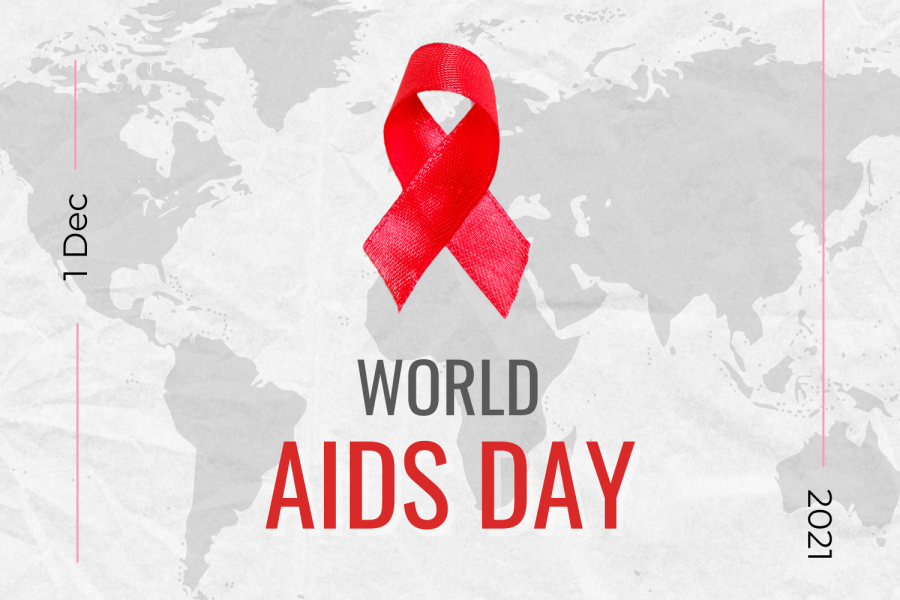World AIDS Day
December 1st marks World AIDS Day. First introduced in 1987 and recognized every year since, this day raises awareness for the spread of and those afflicted with HIV and AIDS.
Few diseases have had as complicated of a history as HIV and AIDS. First inappropriately labeled as a “gay disease,” HIV/AIDS became one of the world’s deadliest health conditions in just twenty years. While its mortality rate has lowered significantly over the past few decades, controversy surrounding HIV and AIDS lingers.
Human immunodeficiency virus (HIV) is believed to have originated in the 1920s in Africa, where it was passed from chimpanzees and gorillas to humans. The original strain evolved from the simian immunodeficiency virus (SIV), common amongst wild primates. Various theories exist as to how SIV was transmitted to humans (most common of which is hunting and eating chimpanzee meat) and mutated to form HIV. Although this virus arose in the 1920s, the first news story in America regarding HIV was not published until 1981.
It was during this time that the Centers for Disease Control (CDC) made a groundbreaking discovery: the detection of Pneumocystis pneumonia (PCP) in five homosexual men in Los Angeles. The sightings of PCP were symptoms of HIV, but scientists were unfamiliar with the mechanisms behind this disease and its ability to spread. Initially, it was called gay-related immune deficiency (GRID). Scientists would later realize that the disease did not exclusively affect homosexuals and renamed this particular stage acquired immunodeficiency syndrome (AIDS), but the damage from this misnomer was already done.
Many heterosexual Americans believed they were incapable of contracting HIV and AIDS. Activists and scientists who attempted to persuade the public that such convictions were false were largely ignored. As such, HIV transmissions skyrocketed across the country. Left untreated, HIV causes AIDS, which in turn leads to a host of physical ailments and a weakened immune system. It wasn’t until the 1990s that Americans would become acutely aware of this condition and its devastating effects.
In 1991, the beloved Los Angeles Lakers point guard Magic Johnson announced that he had contracted HIV. He retired from basketball immediately, and sought to increase AIDS awareness by showing it could affect anyone, regardless of their health or lifestyle. AIDS went on to claim the lives of popular figures such as singer Freddie Mercury and tennis player Arthur Ashe, further leading to a shift in the public’s attitude towards the virus. Finally, the gravity of HIV and AIDS was understood.
Four years after Johnson’s announcement that he had tested positive for HIV, President Bill Clinton hosted the first White House conference on HIV and AIDS and called for the creation of a Vaccine Establishment Center. This center was opened in 1999 and paved the way for a movement worldwide to study HIV, AIDS, and potential cures in-depth.
In Vancouver, Canada, highly active antiretroviral therapy (HAART) was introduced and became the primary treatment for AIDS in 1997. Additionally, the Joint United Nations Programme on AIDS (UNAIDS) was created to formulate a response to the disease and coordinate global action. An at-home testing kit, a viral load test, and a urine test were also developed; all three significantly helped to inhibit the disease. Cases of HIV began to decline significantly throughout the late 1990s and early 2000s.
Since the start of the 21st century, technological advances have expanded on the medical advancements made in the 1990s, and considerable progress has been made to lessen the effects of HIV/AIDS on the general population. As of 2017, new infections have slowed by 33% in Africa and more than half of the global population living with HIV is able to access treatment. Considerable research done on HIV and the development of a potential vaccine for the past 30 to 40 years has yielded tremendous benefits for the public.
Unlike most viruses, HIV uses RNA as its genetic material instead of DNA. SARS-CoV-2, the virus that causes COVID-19, also uses RNA as its genetic material. Research on mRNA vaccines for HIV/AIDS has played a critical role in helping scientists to craft vaccines for COVID-19; additionally, this research will likely continue to assist in understanding and preventing outbreaks of other novel infectious diseases. As scientific research develops and more is known about viruses that use RNA as their genetic material, hopefully patterns and trends can be drawn to address other medical issues and prevent future outbreaks.

Senior Parth Joshi is currently serving as an Editor-in-Chief of Stinger. This is his third year as a member of Stinger, having previously served...










